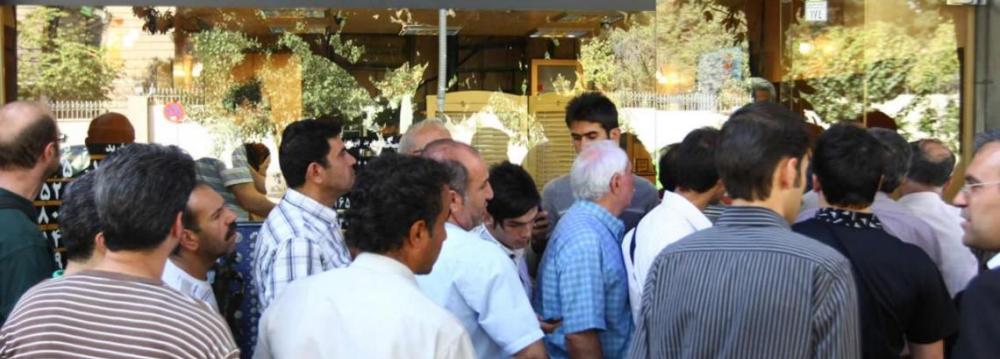The selloff in the currency market continued on Sunday, as investors’ lower safe haven demand drove the rial to new highs versus major currencies.
The dollar rebounded later in the day to 33,510 rials but settled 0.5 percent lower to 32,230 rials by Sunday’s close. Euro closed 0.49 percent higher to 34,850 rials, as low prices spurred buying.
Optimism that the six world powers – the US, Britain, France, Germany, China and Russia – and Iran would end a 12-year nuclear dispute by reaching a political agreement before the end of March sent investors running from foreign currencies.
The ongoing nuclear negotiations already reached a temporary deal in November 2013 that was extended twice since. Now the two sides are trying to hammer out a long-term agreement, with speculations that suggest deal is close.
The US dollar tumbled to its lowest since Sep. 22, versus the rial on Sunday, dipping 1.89 percent to 31,690 rials by 08:42 GMT.
The greenback has lost nearly seven percent in the past week as nuclear deal optimism outweighed yearend demand and the dollar’s strength in international currency trade. Demand for foreign currencies usually increases in Tehran as Iran approaches Nowruz (New Year) festivities on March 21.
The greenback is at 12-year highs against major currencies due to resurgence in the world’s largest economy. The US dollar Index, which tracks the greenback against a basket of its main rivals, closed 0.90 percent higher at 100.33 on Friday, levels last seen in March 2003.
Sinking Euro
The euro trailed its drop in the global arena and sank 1.44 percent to 34,200 rials, a three-year trough.
The euro is at a 12-year low versus the dollar and is headed for parity due to the European Central Bank’s 1.1 trillion euro asset-buying program, many analysts and dealers say. The past eight days have seen five percent knocked off the euro’s value and taken the dollar past many banks’ targets for the next year.
US investment bank Goldman Sachs was the latest major bank to slash its forecasts for the euro on Friday, predicting that it will plunge through parity with the dollar within a year and hit a new record low by the end of 2017, Reuters reported.
“I don’t think it’s an exaggeration to say this week has been a game-changer,” said Neil Mellor, a currency strategist with Bank of New York Mellon in London.
“The combination of last Friday’s jobs numbers and the launch of QE (quantitative easing) in Europe this week have cemented the picture of monetary policy divergence. People are now convinced the Federal Reserve will be able to move in the middle of this year. In that context, talk of parity and even below it is not overdone.”
Not So Great Britain
Sterling was knocked to a 20-month low on Sunday, dropping 1.89 percent to 46,966 rials by 08:42 GMT in Ferdowsi Street – the heart of foreign exchange in Tehran.
The British currency has lost six percent since breaking below the key 50,000 rial level on Saturday. The pound is at its lowest since 2010 versus the dollar in Forex markets.
Falling Gold
Bullion coins also fell on Sunday. Benchmark Azadi, slid 1.65 percent to 8,950,000 rials by 08:54 GMT, breaking the nine million rial barrier.
Many bureau de change owners are nursing losses as they have had to sell all they bought at a discount to their purchase price.
Equitable Equities
Stocks continued their rally in Tehran, gaining 0.57 percent, with banking shares pushing up the Tehran Stock Exchange’s main index to a four-week high of 64,980.60 points.
Industries most affected by sanctions were the main gainers of the optimism a deal coming out of Switzerland – where negotiations are underway – in Tehran’s stock markets.
Petrochemical firms however sent down Iran’s over-the-counter market, Iran Farabourse. The IFX index fell 0.3 percent to 720.93 points by Sunday’s close.


